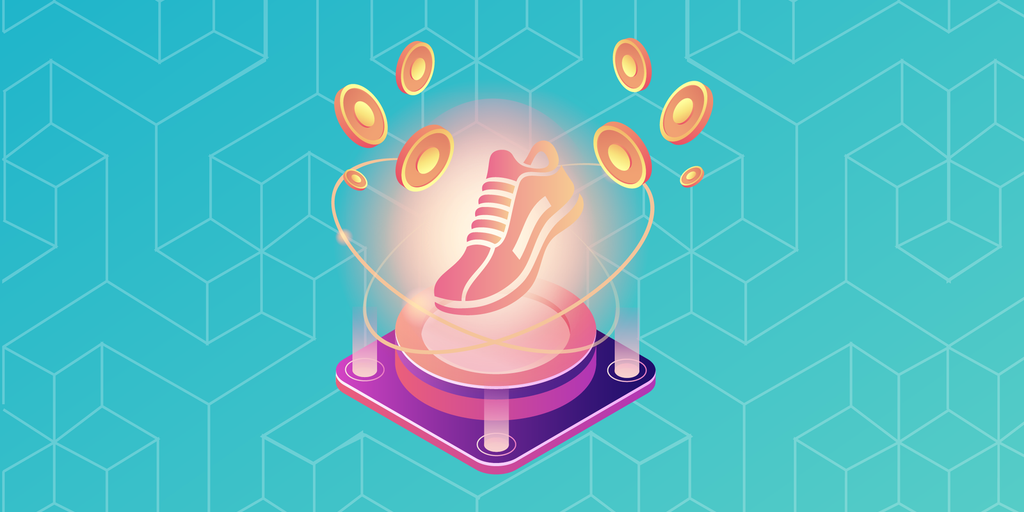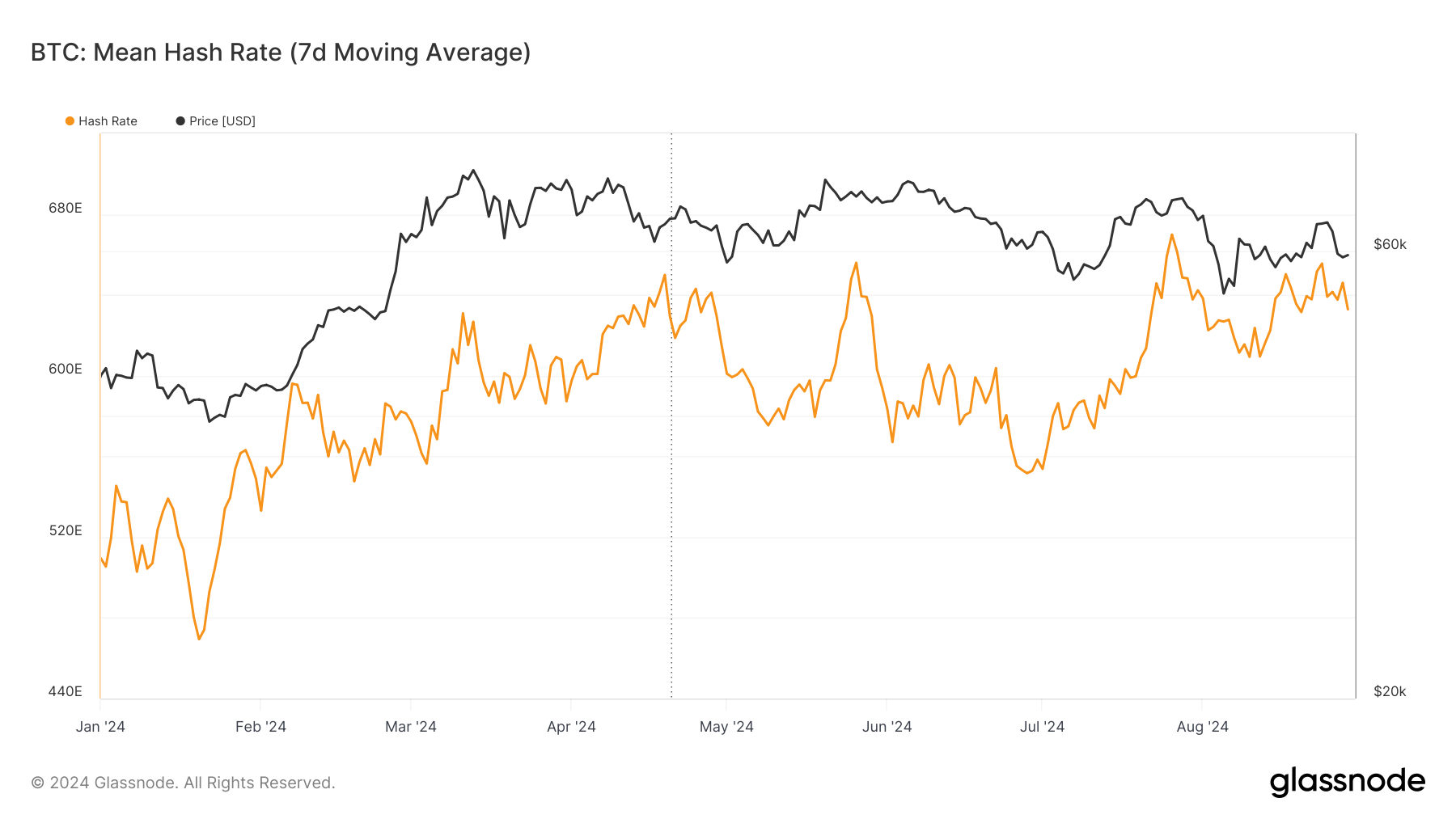
In brief
- “Move-to-earn” app Stepn lets users earn crypto for walking, jogging or running.
- Users must buy NFT sneakers that offer differing returns while exercising; some have sold for thousands of dollars.
On February 19, 2023, the lifestyle app Stepn airdropped its rarest NFT sneaker yet, the Genesis Sneaker. Stepn is the evolution of two concepts that have been gaining traction for several years now: the augmented reality (AR) game and play-to-earn gaming.
AR games typically feature a virtual world overlaid onto the real one. The concept properly took off in 2015 with Pokemon Go, which scattered virtual Pokemon across a real life map of the world and let users track and collect them via GPS.
Stepn takes that element—accruing points based on progress made via GPS—and adds onto it the newer play-to-earn model that was pioneered by crypto games like Axie Infinity, which reward players in crypto tokens. The result: A game that tracks users’ IRL exercise and accrues points to them in the form of crypto.
Thus play-to-earn becomes a GPS-tracked “move-to-earn”: Think of it like Fitbit meets Pokemon Go meets Axie Infinity.
What is Stepn?
Built on Ethereum competitor Solana and created by app developer FindSatoshi Lab, Stepn is a smartphone app that lets users earn money by walking, jogging, or running for a narrowly delineated time period that refreshes every 24 hours.
The rewards come in Stepn’s native cryptocurrency, the Green Satoshi Token or GST, and are credited to a wallet created in-game or imported externally. Players must start by buying an NFT sneaker to play the game, then can boost the amount of GST earned per session by upgrading their sneakers. The sneakers, which are non-fungible tokens (NFTs) and are tradable on secondary markets, already command high prices, ranging from $400 to $100,000.
How does Stepn work?
Two features are crucial in understanding how Stepn works. The first is the sneaker, which has a profound effect on how much money a player can earn and explains why some of these NFTs go for such astronomical sums.
As with a standard roleplaying game, where you might upgrade your armor to withstand certain attacks, in Stepn you upgrade your sneaker to maximize one or more of five different characteristics: Resilience, which slows down wear and tear (and diminishing returns); Luck, which increases the chance of random prizes during a session; Comfort, which increases the intake of another kind of token called GMT which relates to governance; and Efficiency, which increases the amount of GST made per “energy” spent.
That brings us to that other key feature: Energy. On Stepn, Energy is the unit of time allocated to a player for a move-to-earn session; one unit represents five minutes. Each player starts with a mere two energy units which replenish every 24 hours, meaning newbies are afforded only ten minutes to per day during which they can earn GST (the app will also make sure you’re moving at the required speed relative to your sneaker type).
To obtain more energy, you need to buy more sneakers, which is costly, and players have to deftly balance the cost of buying new energy slots with the potential gains to be made from having longer earning sessions. (They also have to factor in volatility—GST’s price has ranged from 52 cents to $2.30 in its short lifespan.) But a winning combination is possible: Reports have emerged of players raking in $400 a day; most start at around $5.
Who’s working with Stepn?
- Alchemy Pay – a crypto-fiat payments developer that recently added functionality for GMT.
- ASICS – the major sports brand recently added its own collection of NFT sneakers to Stepn’s catalog.
What is Stepn’s token?
Three tokens are required to master Stepn: SOL, the native token of the Solana network, which is used to purchase new sneakers (this can alternatively be done with Binance Coin but the NFT sneakers are on Solana); GST, the token earned through walking, jogging or running that is used to purchase new upgrades; and GMT, Stepn’s governance token that entitles holders to vote on the future of the platform.
GST has an unlimited supply, while GMT’s supply is capped at 6 billion, and is only awarded to users who have upgraded their sneakers past level 30.
Where to buy Stepn’s tokens
Both of Stepn’s tokens, GMT and GST, are available on crypto exchanges like Binance, OKX, Bybit, CoinTiger, and FTX.
The future of Stepn
Though Stepn saw huge initial success, it ran into trouble in China in the aftermath of 2022’s crypto market turmoil.
The industry-wide downturn—along with Chinese data laws which prohibit the storage of citizens’ GPS data—raised the hackles of the country’s regulators, forcing Stepn to block Chinese users. Depending on their data protection laws—and their attitude towards crypto—other countries could follow suit.
The platform has also suffered a series of distributed denial-of-service (DDoS) attacks in the months following its launch, forcing Stepn to warn users that “work-outs may not be recorded properly” during periods of maintenance.
If Stepn can overcome these initial hurdles, “move-to-earn” could well become a thriving sector of the crypto space. And if its economic incentives get a few people off their couches and into their running shoes, that’s surely no bad thing.



